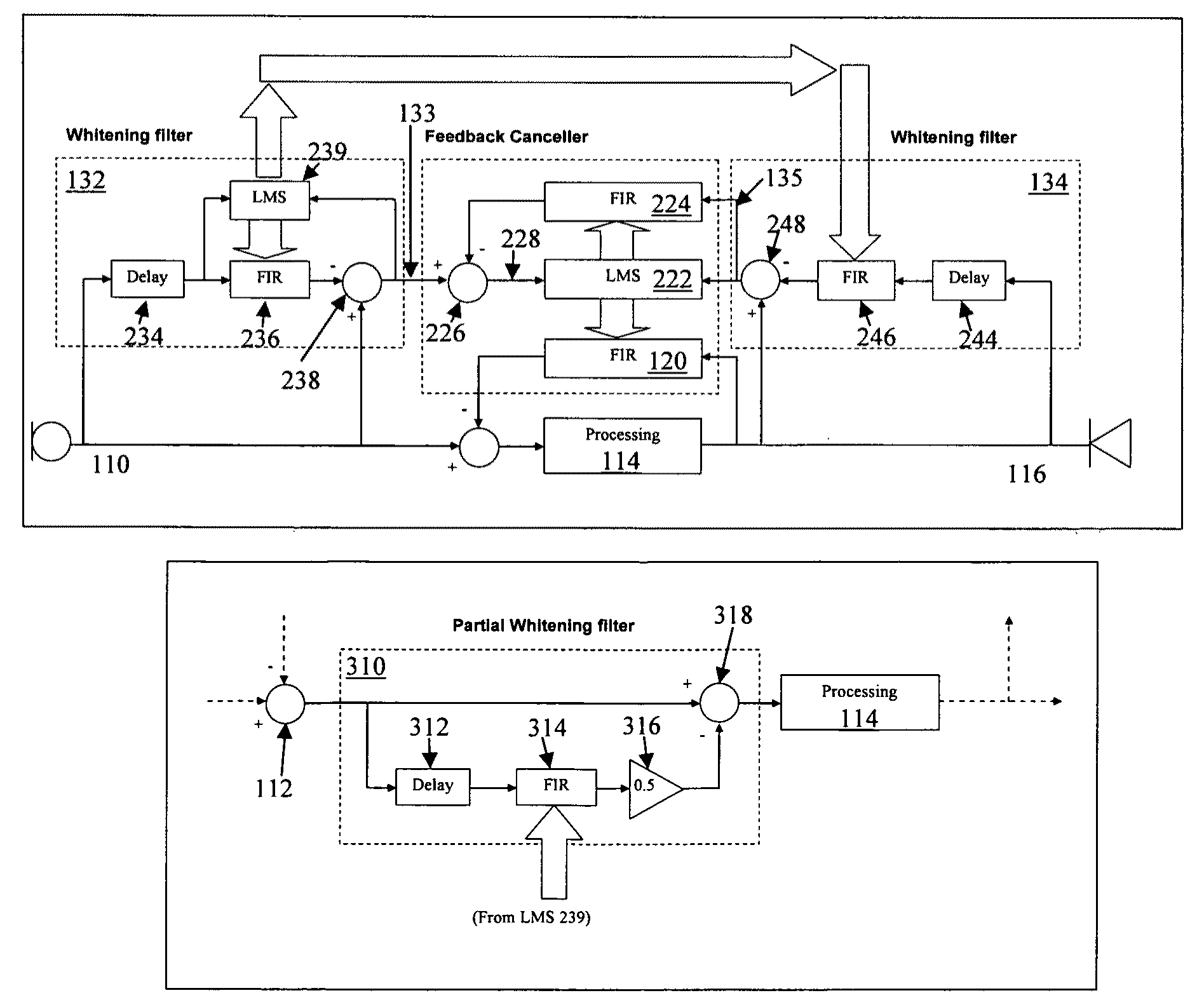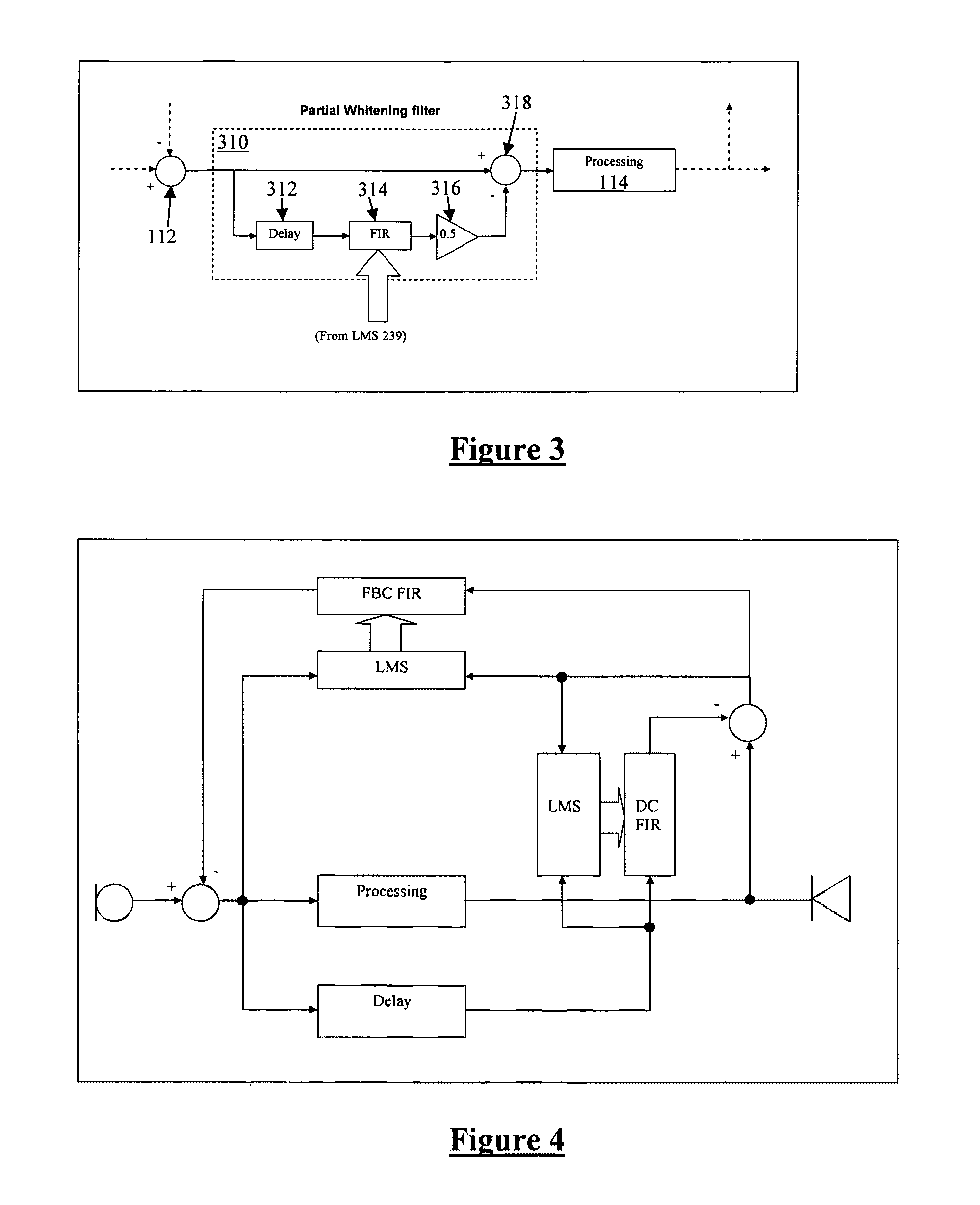Entrainment resistant feedback cancellation
a feedback cancellation and resistance technology, applied in the direction of transducer acoustic reaction prevention, transmission, electrical equipment, etc., can solve the problems of oscillation and instability in the processing path, the hearing aid device usually emits a continuous and unpleasant high-pitched whistle or squeal, and the user of the hearing aid is not happy with so as to achieve the effect of reducing the frequency of the signal and reducing the nois
- Summary
- Abstract
- Description
- Claims
- Application Information
AI Technical Summary
Benefits of technology
Problems solved by technology
Method used
Image
Examples
Embodiment Construction
[0039]FIG. 1 illustrates a system 100 for sound signal processing. An input signal 110 derived from an input sound signal is passed to a summing node 112. A feedback cancellation filter 120 provides a level of cancellation of a feedback signal arising from feedback of the output signal 116 back to the system input. The feedback cancellation signal 122 produced by the feedback cancellation module 120 is subtracted from the input signal 110 to produce a feedback cancelled signal 113. Signal 113 is processed by a signal processor 114 implementing a processing algorithm, which could be any suitable hearing aid signal processing algorithm, one example of which being the ADRO technique set out in U.S. Pat. No. 6,731,767, the content of which is incorporated herein by reference.
[0040]Following processing by processor 114, the output signal 116 is output for conversion back to audio by a speaker and / or for further processing. The output signal 116 is also passed to the feedback cancellation...
PUM
 Login to View More
Login to View More Abstract
Description
Claims
Application Information
 Login to View More
Login to View More - R&D
- Intellectual Property
- Life Sciences
- Materials
- Tech Scout
- Unparalleled Data Quality
- Higher Quality Content
- 60% Fewer Hallucinations
Browse by: Latest US Patents, China's latest patents, Technical Efficacy Thesaurus, Application Domain, Technology Topic, Popular Technical Reports.
© 2025 PatSnap. All rights reserved.Legal|Privacy policy|Modern Slavery Act Transparency Statement|Sitemap|About US| Contact US: help@patsnap.com



